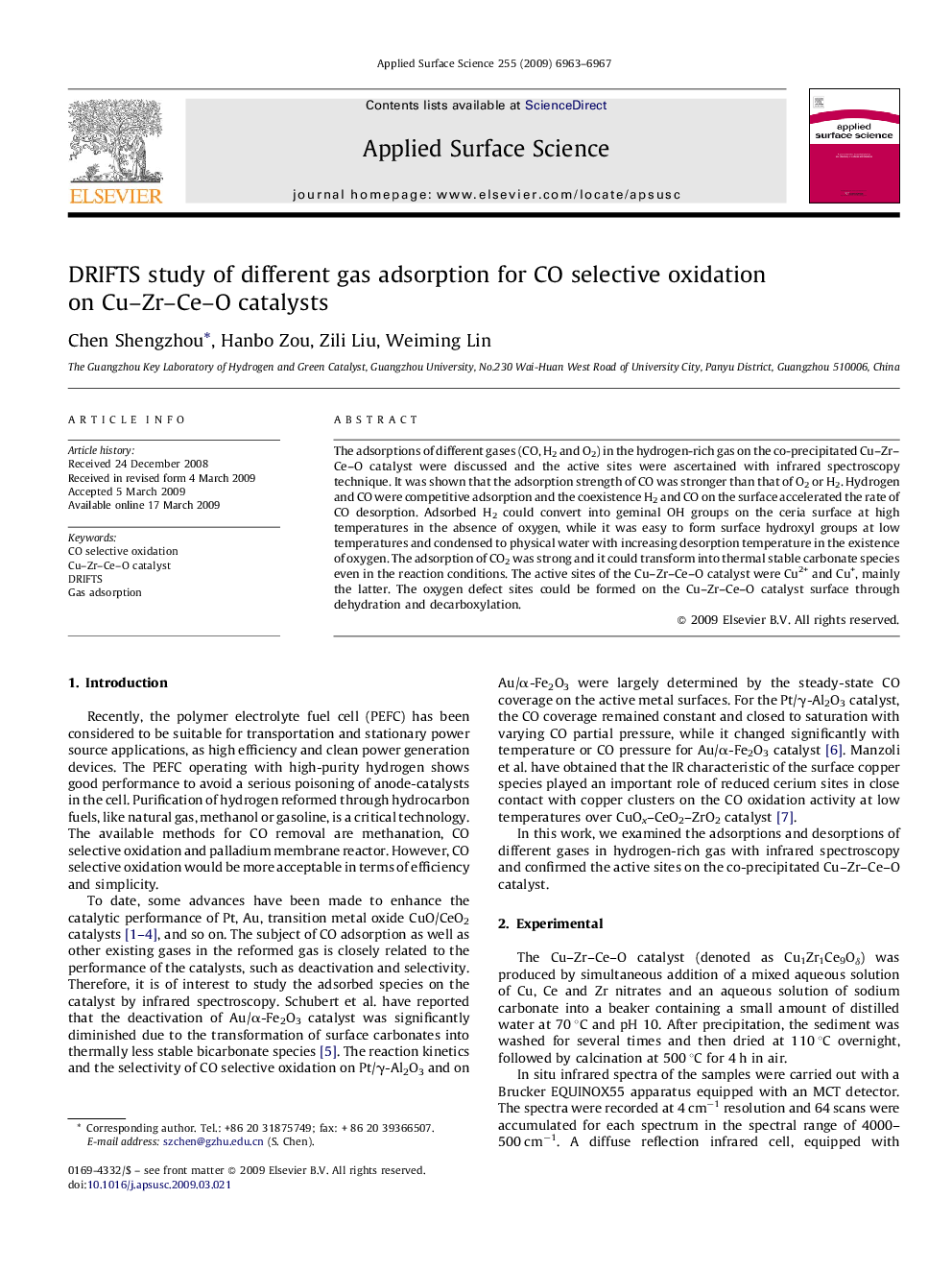| Article ID | Journal | Published Year | Pages | File Type |
|---|---|---|---|---|
| 5369169 | Applied Surface Science | 2009 | 5 Pages |
The adsorptions of different gases (CO, H2 and O2) in the hydrogen-rich gas on the co-precipitated Cu-Zr-Ce-O catalyst were discussed and the active sites were ascertained with infrared spectroscopy technique. It was shown that the adsorption strength of CO was stronger than that of O2 or H2. Hydrogen and CO were competitive adsorption and the coexistence H2 and CO on the surface accelerated the rate of CO desorption. Adsorbed H2 could convert into geminal OH groups on the ceria surface at high temperatures in the absence of oxygen, while it was easy to form surface hydroxyl groups at low temperatures and condensed to physical water with increasing desorption temperature in the existence of oxygen. The adsorption of CO2 was strong and it could transform into thermal stable carbonate species even in the reaction conditions. The active sites of the Cu-Zr-Ce-O catalyst were Cu2+ and Cu+, mainly the latter. The oxygen defect sites could be formed on the Cu-Zr-Ce-O catalyst surface through dehydration and decarboxylation.
